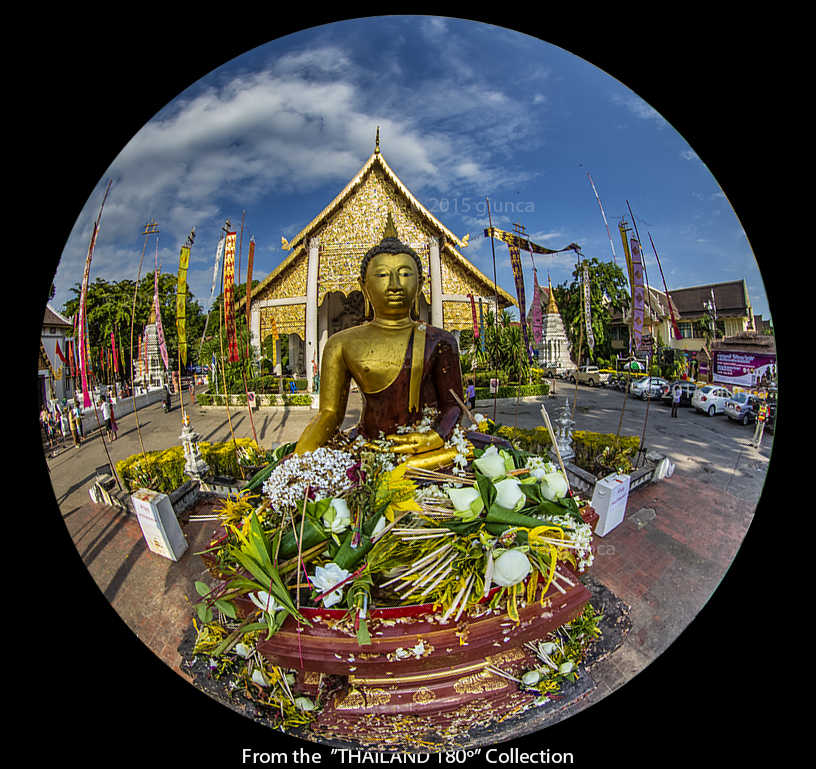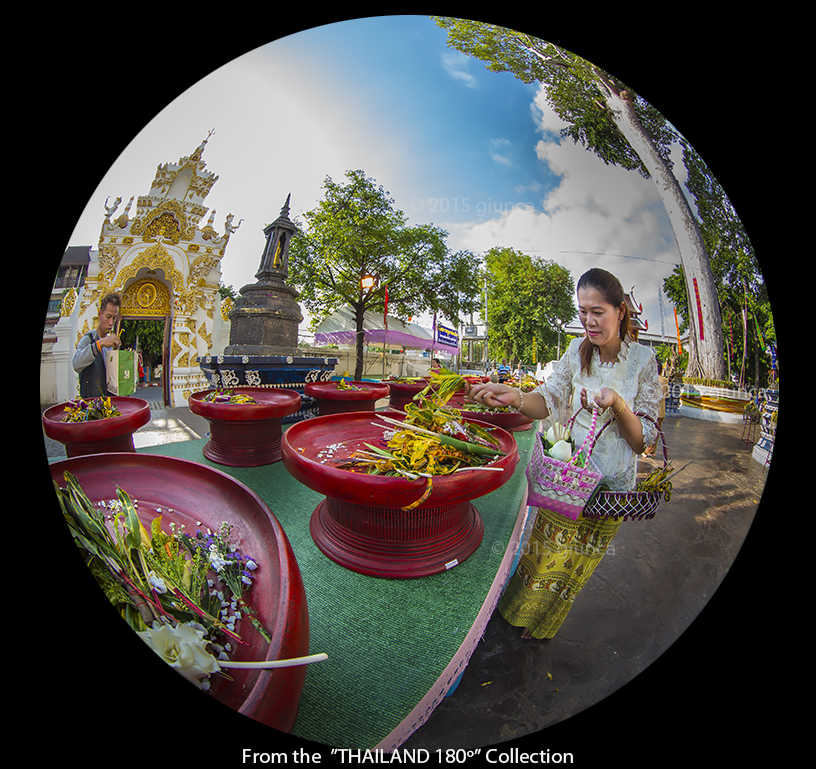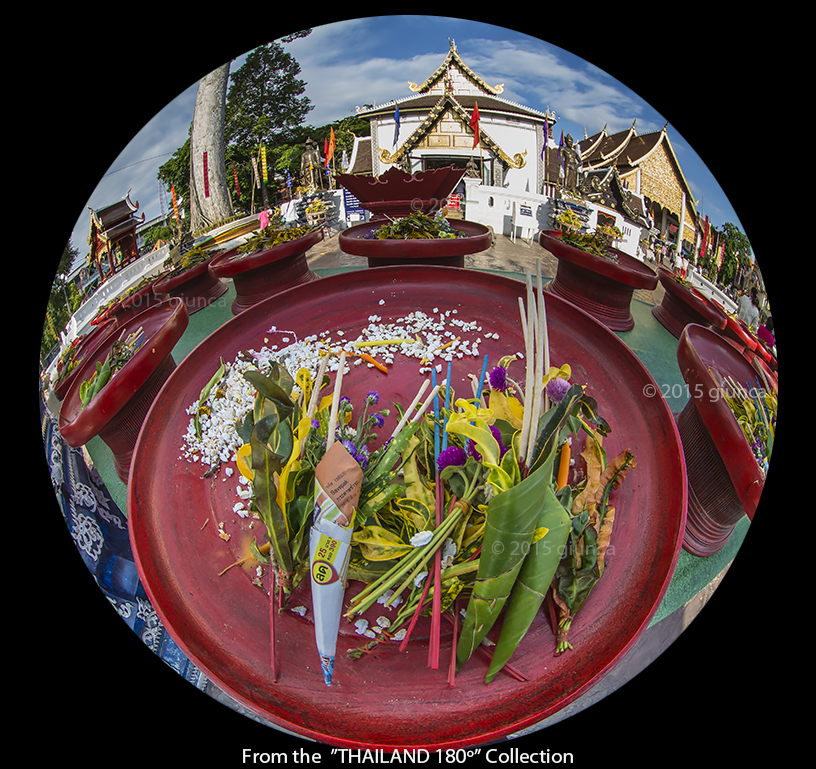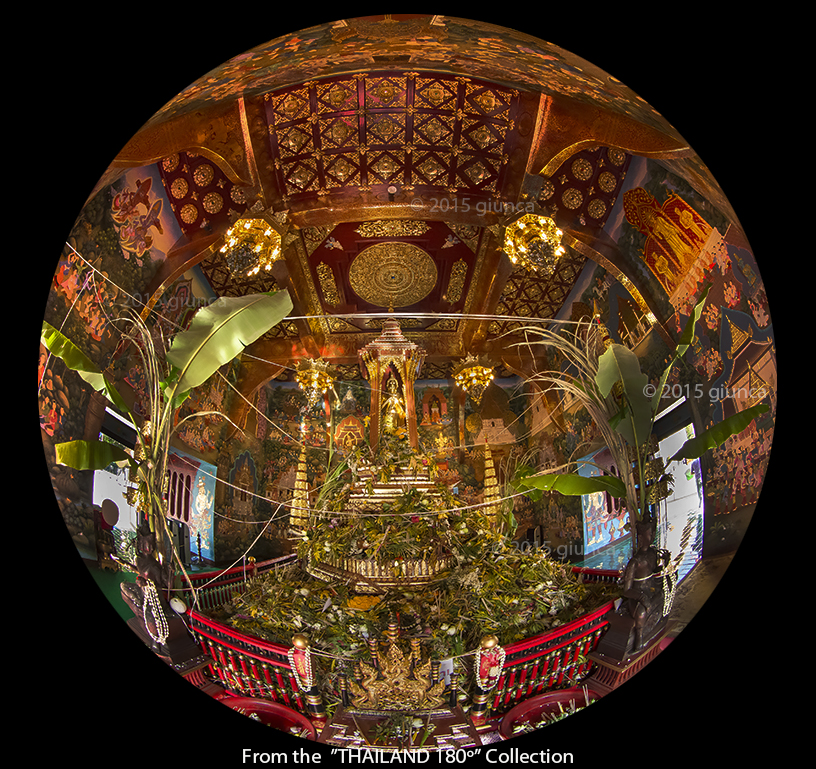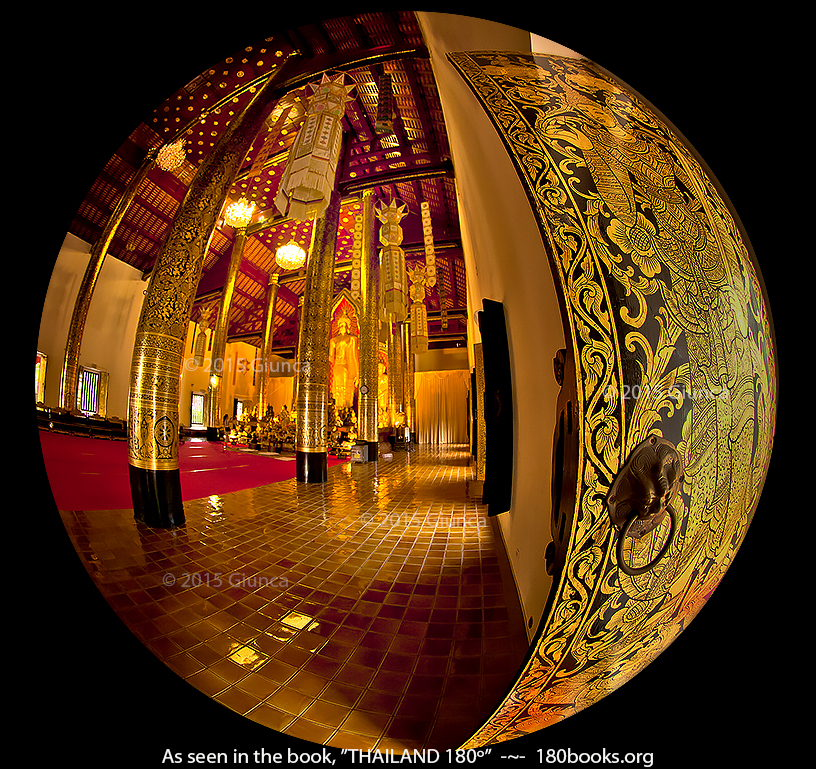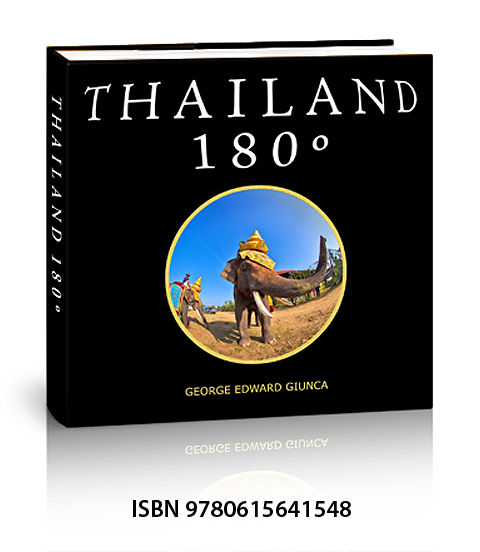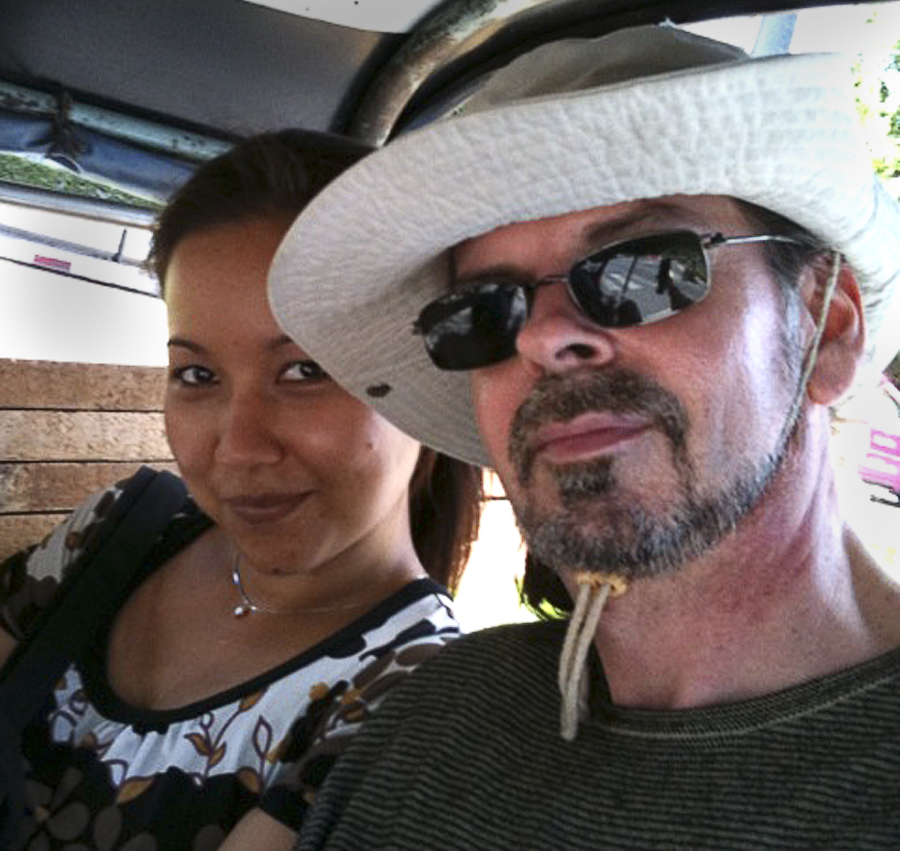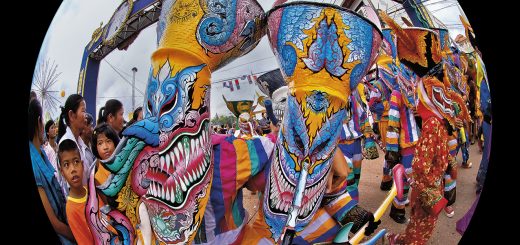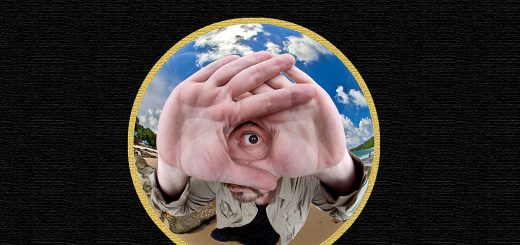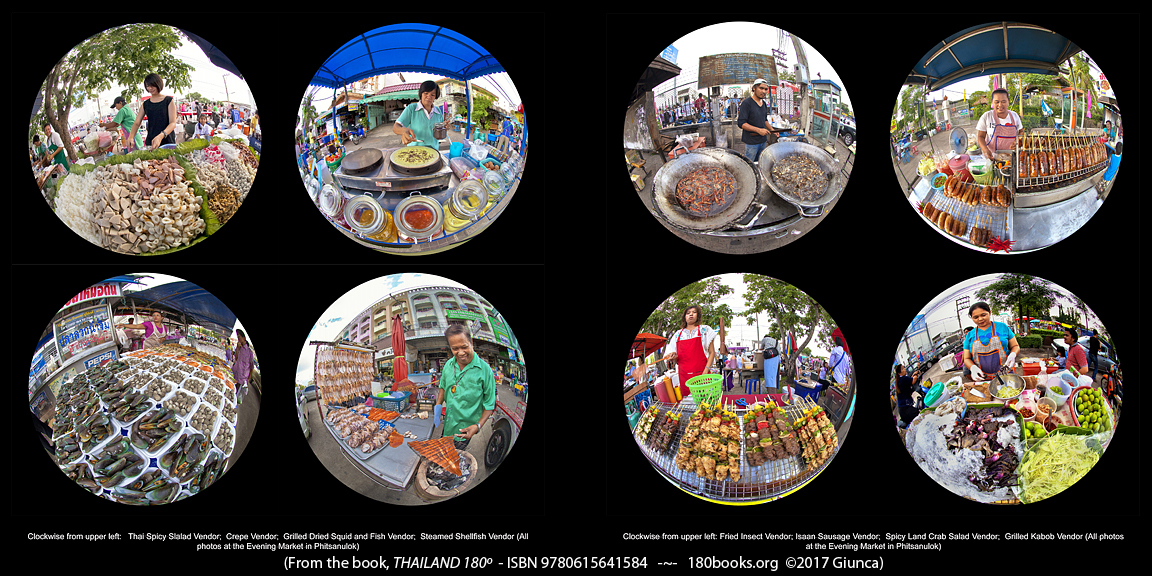The Inthakin Festival in Chiang Mai, Thailand : ใส่ขันดอกอินทขีล เชียงใหม่
Last Sunday we visited Wat Chedi Luang, an ancient royal temple situated in the center of Chiang Mai, to see the Inthakin Festival (Sai Khan Dok Inthakin). This is a festival to venerate the city pillar, which is believed to both protect the city and bring it prosperity. This year the festival runs from June 1st through June 7th.
วันนี้ THAILAND 180º พาไปงาน “ประเพณีใส่ขันดอกอินทขีล” ณ วัดเจดีย์หลวงวรวิหาร พระอารามหลวงโบราณ กลางใจเมืองเชียงใหม่ … ซึ่งมีกำหนดการจัดงานในช่วงวันที่ ๑-๗ มิถุนายนของทุกปี
Phra Chao Fon Saen Ha Buddha Image – พระเจ้าฝนแสนห่า
We knew we had arrived at a temple festival when we saw a line of vendors selling offerings, just outside its gate. Immediately upon entering the compound, we saw the impressive Phra Chao Fon Saen Haa (the Five Hundred Thousand Raindrop Buddha) Buddha image, in front of the viharn. This bronze image is reportedly over 1000 years old. Normally it is kept at Wat Chang Taem, a temple nearby, but because it is such a revered image among the northern Thai people, it was brought to this temple for the festival. Small cups of lustral water infused with the acacia concinna plant are poured over the image to pay homage and request a copious amount of rain to help the crops.
เมื่อเดินผ่านประตูทางเข้าวัดเจดีย์หลวงจะเห็น “พระเจ้าฝนแสนห่า” ประดิษฐานอยู่ด้านหน้าพระวิหารหลวง เป็นพระพุทธรูปทองสัมฤทธิ์ ปางมารวิชัยเชียงแสนลังกา มีขนาดหน้าตักกว้าง ๒๕ นิ้ว สูง ๓๕ นิ้ว หนา ๑๕ นิ้ว อายุพันกว่าปี ชาวเชียงใหม่ถือเป็นพระพุทธรูปศักดิ์สิทธิ์คู่บ้านคู่เมืองมาตั้งแต่อดีต ซึ่งปกติประดิษฐานอยู่ที่วัดช่างแต้มใกล้ๆ กับวัดเจดีย์หลวง ชาวเชียงใหม่เชื่อว่า พระเจ้าแสนห่ามีพุทธานุภาพบันดาลให้ฝนตกต้องตามฤดูกาล เทศบาลนครเชียงใหม่จึงอาราธนาพระเจ้าฝนแสนห่าขึ้นประดิษฐานบนรถบุษบกศรีเมืองเชียงใหม่ แห่ไปรอบเมืองเพื่อให้ประชาชนสรงน้ำและดลบันดาลให้ฝนตกต้องตามฤดูกาล จากนั้นประดิษฐานไว้ด้านหน้าพระวิหารหลวงให้ประชาชนสรงน้ำจนเสร็จสิ้นงานประเพณีใส่ขันดอกอินทขีล สังเกตได้ว่าแต่ละท่านที่มาสรงน้ำจะเตรียมน้ำสำหรับสรงมาเองเป็นสีคล้ายน้ำชาอ่อนๆ นั่นคือ น้ำขมิ้นส้มป่อย หรือ น้ำส้มป่อย ชาวล้านนาเชื่อว่าเป็นสิ่งมงคล ช่วยล้างอัปมงคลต่างๆ จึงใช้สำหรับรดน้ำพระพุทธรูป หรือสิ่งศักดิ์สิทธิ์ และใช้ในการรดน้ำดำหัวผู้เฒ่าผู้ใหญ่เพื่อขมาและขอพร
Giving Offerings to Make Merit – ใส่ขันดอก
Since the pavilion which contains the city pillar can only be entered by men, long tables with pedestals are set up for female devotees to place offerings. These offerings are for the city pillar, the yaksa (protecting deity), Rushi (a devout hermit), as well as the Buddha image inside the pavilion. The photo below shows some of these offerings including grains, flowers, incense sticks, and candles.
ด้านข้างจะเห็นวิหารจตุรมุขศิลปะแบบล้านนาประยุกต์ ภายในวิหารเป็นที่ประดิษฐานเสาอินทขีล อนุญาตให้เข้าไปสักการะได้เฉพาะผู้ชายเท่านั้น และตรงลานด้านนอกวิหารนั้นจะมีพาน (ขัน) ที่ทางวัดจัดเตรียมวางเรียงไว้รอบๆ เพื่อให้ผู้หญิงและประชาชนทั่วไปนำดอกไม้ที่เตรียมมาสักการะใส่ขันดอกไปวางในพาน (ขัน) เหมือนกับการใส่บาตรดอกไม้บูชาแก่เสาอินทขิล กุมภัณฑ์ ฤาษี และพระรัตนตรัย การสักการะบูชาก็ตามแต่จัดเตรียมของแต่ละท่าน ส่วนมากมีข้าวตอก ดอกไม้ ธูป เทียน นำวางใส่ในขันดอก และกล่าวคำบูชาขอพร นอกจากนี้ยังมีช่างซอพื้นเมือง และช่างฟ้อนมาร่วมงานบูชาเสาอินทขิลและผลัดกันซอและฟ้อนรำเป็นพลีกรรมถวาย
The City Pillar – เสาหลักเมือง
The present city pillar, constructed of bricks and cement is decorated with mosaic glass and a Buddha image rests on top. Originally the city pillar was at Wat Sadue Mueang, (the Temple of the City’s Navel), but was relocated by King Kawila who also placed the Yaksa outside the pavilion in 1800. The festival has been held annually ever since.
เสาอินทขิลปัจจุบันสร้างด้วยอิฐโบกปูนประดับลวดลายติดกระจกสีสวยงามและประดิษฐานพระพุทธรูปปางรำพึงบนเสาดังปรากฏในปัจจุบัน เดิมเสาหลักเมืองประดิษฐานที่วัดสะดือเมือง ต่อมาในสมัยพระเจ้ากาวิละผู้ครองเมืองเชียงใหม่โปรดฯ ให้ย้ายมาไว้ที่วัดเจดีย์หลวงและบูรณะปฏิสังขรณ์ขึ้นใหม่พร้อมทั้งสร้างวิหารจตุรมุขศิลปะแบบล้านนาครอบไว้ สร้างรูปปั้นกุมภัณฑ์และฤาษีไว้พร้อมกับเสาอินทขีล เพื่อให้ประชาชนชาวเมืองได้สักการะบูชาเมื่อปี พ.ศ. ๒๓๔๓ และปฏิบัติเป็นประเพณีการบูชาอินทขีลของชาวเมืองเชียงใหม่อย่างเป็นระเบียบเรียบร้อย อีกทั้งชาวเมืองเชียงใหม่จะแต่งกายพื้นเมืองมางานร่วมบุญประเพณีนี้ด้วย
Inside the Viharn of Wat Chedi Luang – พระวิหารวัดเจดีย์หลวง
Last, but not least, we revisited the viharn which we included in our THAILAND 180º book. I was always impressed by the decor of this temple, which includes chandeliers, Lanna lanterns, gilded pillars and doors adorned with gold leaf and lacquer.
ภายในพระวิหารหลวงของวัดเจดีย์หลวง เป็นที่ประดิษฐานพระพุทธอัฏฐารส หล่อด้วยทองสำริด ปางห้ามญาติสูง ๑๘ ศอก สร้างในสมัยล้านนา พุทธศตวรรษที่ ๒๐ ซึ่งได้รับอิทธิพลจากสุโขทัยที่นิยมสร้างพระพุทธรูปขนาดใหญ่ในอิริยาบถต่างๆ ภายในประดับดาวเพดาน ตุง และโคม บานประตู หน้าต่าง และเสา ลายรดน้ำลงรักปิดทอง ดังภาพด้านล่างนี้จากหนังสือ THAILAND 180º
Getting Around Chiang Mai – รถแดง เชียงใหม่
Using the red trucks, often called Songthaews to get around Chiang Mai’s city area is pretty straightforward. You just stand by the road and wait for the truck to come along. Wave him down and tell him where you want to go. If he nods his head, get in the back and hang on. This means that the fare will be 20 baht. If he asks how many passengers, looks suspicious, or names a higher fare than you want to pay, shake your head and say, “Mai Bpai”. This is Thai for “Not going”. Don’t get angry of act rude, even my Thai wife gets quoted exorbitant rates sometimes and there are hundreds of these trucks in the city. He may lower his price but will more than likely just drive away. A ride outside of the city area should be clearly agreed upon before the trip. You may want the driver to wait for you and bring you back home. In general, songthaews charge around 200 baht per hour. Buses are available for some areas and since this is new, you may want to check out this map for updates on routes http://www.mx7.com/i/e09/b8kvxF.jpg We’ll be blogging about the new bus system soon.
“รถแดง” เป็นเอกลักษณ์อย่างหนึ่งของเชียงใหม่ หลายท่านทราบถึงกิตติศัพท์ทั้งทางที่ดีและทางที่สุดจะบรรยาย… ซึ่งรถแดงในตัวเมืองเชียงใหม่มีเป็นร้อยเป็นพันคัน ดังนั้นเมื่อโบกรถ-บอกที่หมายปลายทาง-คนขับพนักหน้า แสดงว่าไปในราคาคนละ ๒๐ บาท ก็โดดขึ้นรถไปได้เลย แต่หากบางคันที่เราโบกแล้วคนขับเรียกค่าโดยสารเกิน ๒๐ บาท ก็พิจารณาดู ถ้าแพงเกินไป ก็อย่าได้แคร์! รอเรียกคันใหม่ค่ะ … หากไปนอกเมืองหรือไประยะไกลก็ควรระบุจุดหมายปลายทางและตกลงราคาให้ชัดเจนว่าเป็นราคาต่อเที่ยว หรือ ต่อคน และถ้าเป็นราคาเหมาทั้งคันแล้วก็ห้ามรับผู้โดยสารข้างทางนะ อะไรประมาณนี้ เพราะแอดมินเจอพวกมั่ว รับผู้โดยสารตามรายทางเฉยเลยทั้งที่เราจ่ายเหมาแพงด้วย … สำหรับในตัวเมือง ตอนนี้บางเส้นทางมีรถแดงประจำทางให้บริการในราคา ๑๐-๑๕ บาท โดยมีหมายเลขติดด้านหน้าและข้างตัวรถ แล้วก็ยังมีรถเมลล์เชียงใหม่ซิตี้บัส แอร์เย็นฉ่ำ สามารถดูเส้นทางเพิ่มเติมได้ที่ http://www.mx7.com/i/e09/b8kvxF.jpg … สำหรับอัพเดทเพิ่มเติมเกี่ยวกับรถเชียงใหม่ซิตี้บัส ไว้มาเขียนบล๊อกแยกไว้ให้ต่างหากนะคะ
If you enjoyed this story, subscribe using the “Subscribe” button below, or Click “Like” on our fan page! Here
ผู้ติดตามอ่านบล็อก สามารถติดตามอัพเดทโพสต์บล็อกได้โดยสมัครสมาชิกที่บล็อก หรือ กดไลค์ที่เฟสบุ๊คเพจของเราที่นี่ Here
The THAILAND 180º Book
Here’s How to Order Your Copy of THAILAND 180º Collectors EditionToday!
In Thailand —>>>http://www.thailand180.com/thaiorder.html
The Rest of the world: We are offering our book on Amazon.com, below list price and I’ll pay for the shipping within the United States! http://amzn.to/1knDPRR
This show details the origin of 180 Books, a series of art/travel books illustrated with a circular fisheye lens. By using infographics, pictures from our THAILAND 180º book, and never seen before images from our vault, we’ll demonstrate this unique lens and present our unique books.
Also, because there’s nothing to watch on TV, here’s a trailer about our book, “THAILAND 180”
About the Authors
Photographer George Edward Giunca, and his Thai wife, Apisatha, have traveled around Thailand armed with a circular fisheye lens to create a photo essay on the rich cultural diversity, and abundant natural beauty of the Kingdom of Thailand. Fleeing from angry water buffaloes, slapping huge mosquitoes, watching exotic festivals and religious rituals, gorging on delicious spicy food, applying aloe vera cream to sunburned skin, wading through rice paddies, getting drenched to the bone by heavy monsoon rains, and gawking at breath-taking scenery; made it a journey of epic proportions! The result is the book, THAILAND 180º. They currently live in Chiang Mai where they continue to blog and are now working on a CHIANG MAI 180º book.


